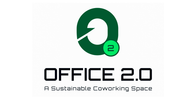Dressing for Success: A Guide to Workplace Do's and Don'ts
18th Nov 2023
Your attire speaks volumes about your professionalism and can significantly impact how you are perceived in the workplace. Whether you're starting a new job or aiming to step up your professional game, knowing how to dress for work is essential. In this guide, we'll explore the dos and don'ts of workplace attire to help you make a lasting impression and feel confident in any professional setting.
What to do:
- Understand the company culture:Before updating your wardrobe, take time to understand your company's dress code and culture. Some workplaces may have a formal dress code, while others have a more casual atmosphere. Tailoring your attire to company culture shows that you respect and understand your workplace environment.
- Invest in quality fundamentals:Build a foundation of timeless, high-quality basics like tailored blazers, dress shirts and classic trousers. These versatile pieces can be mixed and matched to create a variety of professional looks and will stand the test of time.
- Dress for the job you want:Projecting an image of success starts with preparing for the position you aspire to. If you're aiming for a leadership role, incorporate sophisticated and sophisticated items into your wardrobe. Let your clothes reflect your ambition and dedication to your career.
- Take care of your makeup:Personal grooming is as important as your choice of clothing. Maintain good personal hygiene, keep your hair well-groomed and pay attention to details such as trimmed nails. A great appearance enhances your overall business image.
- Accessorize wisely:Accessories can elevate your outfit and reflect your personality. Tasteful accessories like a quality watch, classic handbag, or subtle jewelry can add a touch of sophistication without distracting.
What not to do:
- Avoid accidental exaggeration: Although some workplaces encourage casual attire, avoid going overboard. Items such as ripped jeans, overly casual T-shirts or sneakers may not be appropriate for many professional environments. Save these for casual Fridays or days with a more relaxed dress code.
- Stay away from aggressive clothes: Clothing containing offensive language, graphics or symbols is never appropriate in a professional setting. Choose neutral and neutral attire to maintain a positive and respectful workplace environment.
- Say no to overly ostentatious outfits: It is important to dress decently in a professional environment. Avoid clothing that is too revealing, such as low-cut tops, short skirts or overly tight dresses. Your goal is to be taken seriously for your skills and abilities, not your choice of clothing.
- Avoid overly trendy clothes: While it's great to incorporate current fashion trends, avoid building your entire work outfit around them. Use classic, timeless pieces with a few trendy items to keep your look sophisticated and professional.
- Mind the Fit: Poorly fitting clothing can detract from even the most stylish outfit. Pay attention to the fit of your clothes, whether they're too tight, too loose, or too long. Tailoring can make a significant difference in how you present yourself professionally.
Conclusion: Mastering the art of dressing for work involves understanding the culture of your workplace, investing in quality clothing, and paying attention to details. By following these dos and don'ts, you can create a professional wardrobe that reflects your ability, ambition, and respect for the workplace. Remember, a great appearance contributes to a positive professional image and can open doors to new opportunities in your career.


